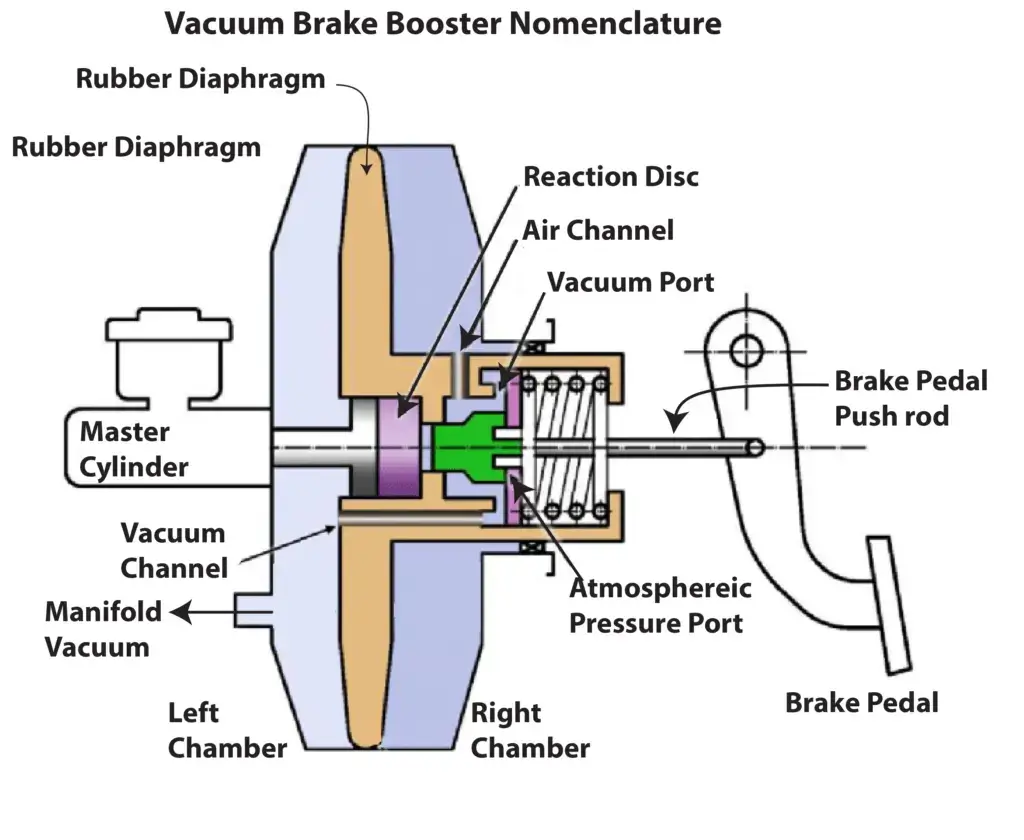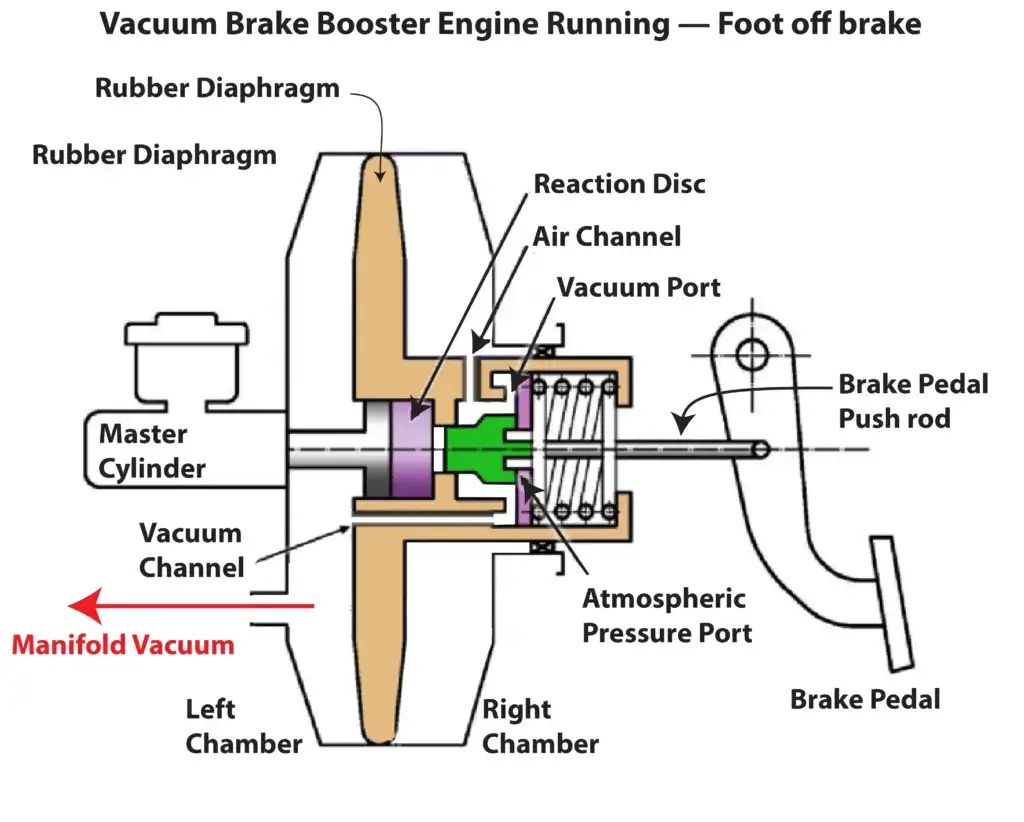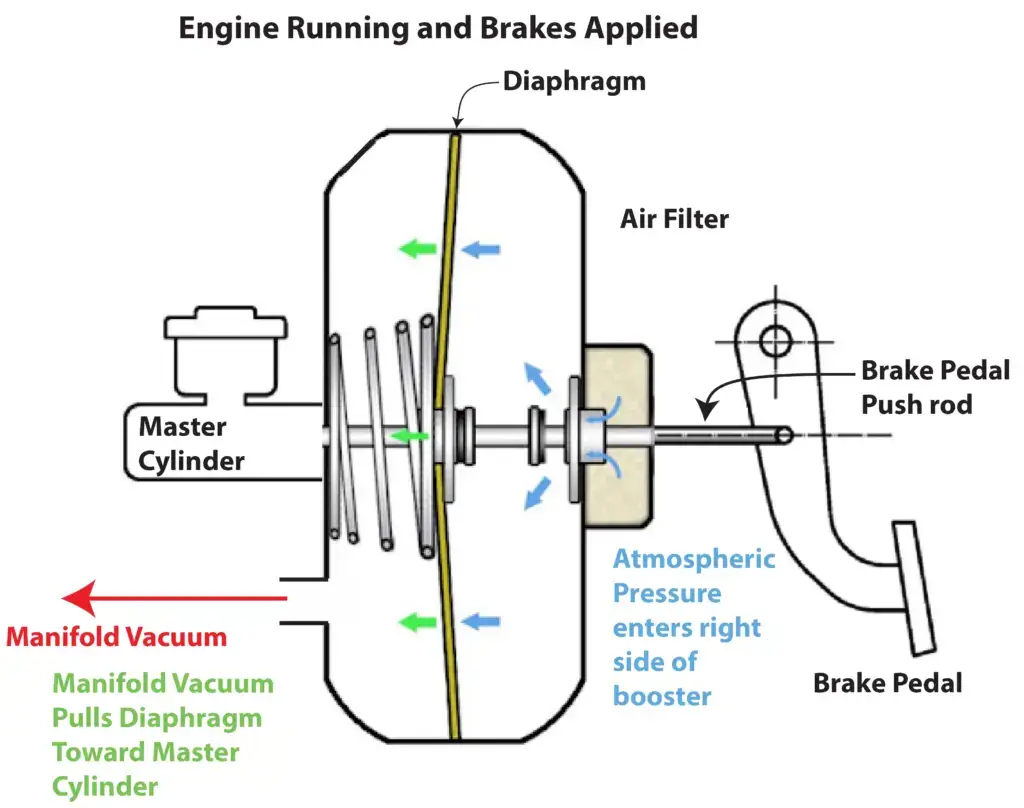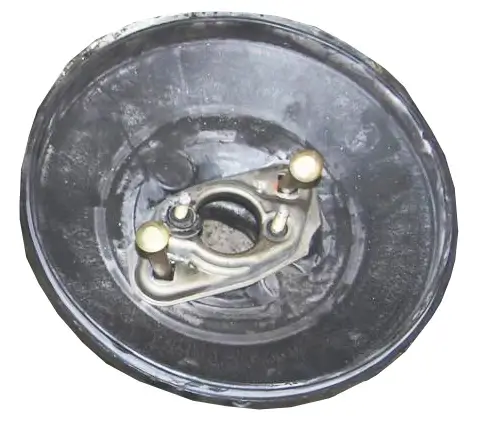How a vacuum brake booster works and how it fails
A vacuum brake booster is what gives you power brakes
The most common way to provide power braking is with a vacuum brake booster. The brake booster mounts on the firewall of the vehicle and is connected to the brake pedal with a rod inside the cabin. The master cylinder is mounted on the opposite side of the brake booster, inside the engine compartment.
Vacuum brake booster components
In the image below you’ll see the following components and what each does:
• Rubber diaphragm — the rubber diaphragm is sucked toward the master cylinder when the brakes are applied. It moves forward because the vacuum on the master cylinder side is greater than the atmospheric pressure on the cabin side of the diaphragm. As the diaphragm is pulled toward the master cylinder, a rod connected to the diaphragm pushes into the master cylinder, which forces brake fluid to the brakes to apply them
• Vacuum channel — With the engine running and the driver’s foot off the brake, the vacuum channel allows manifold vacuum from the running engine to both sides of the diaphragm. In this mode, vacuum is equal on both sides of the diaphragm and it stays in a straight vertical position.
• Atmospheric port — As the driver applies the brakes, the atmospheric port allows air in the cabin to enter the right side of the vacuum booster. At this point, the vacuum on the left side of the diaphragm is greater than the atmospheric pressure on the right side of the diaphragm and the diaphragm is pulled toward the master cylinder.
Vacuum booster at rest with engine running
This image shows equal vacuum on both sides of the diaphragm. The vacuum brake booster isn’t doing anything at this point.
Brake booster when braking with engine running
How brake boosters fail
Atmospheric valve seal failure
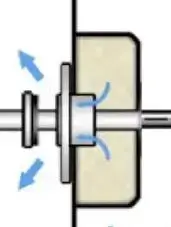
When the atmospheric valve seal fails, you hear a brake hiss sound inside the cabin when applying the brakes
The atmospheric valve seal fails, making a brake hiss sound any time you apply the brakes. The fix is to replace the entire brake booster with a rebuilt unit. Parts are not available to replace the atmospheric valve seal.
Diaphragm contamination from brake fluid
A damaged/leaking read seal from the master cylinder can allow brake fluid to get
sucked into the brake booster, contaminating the rubber diaphragm. This can result in low
brake pedal effort, or even loss of power assist
Posted on by Rick Muscoplat

